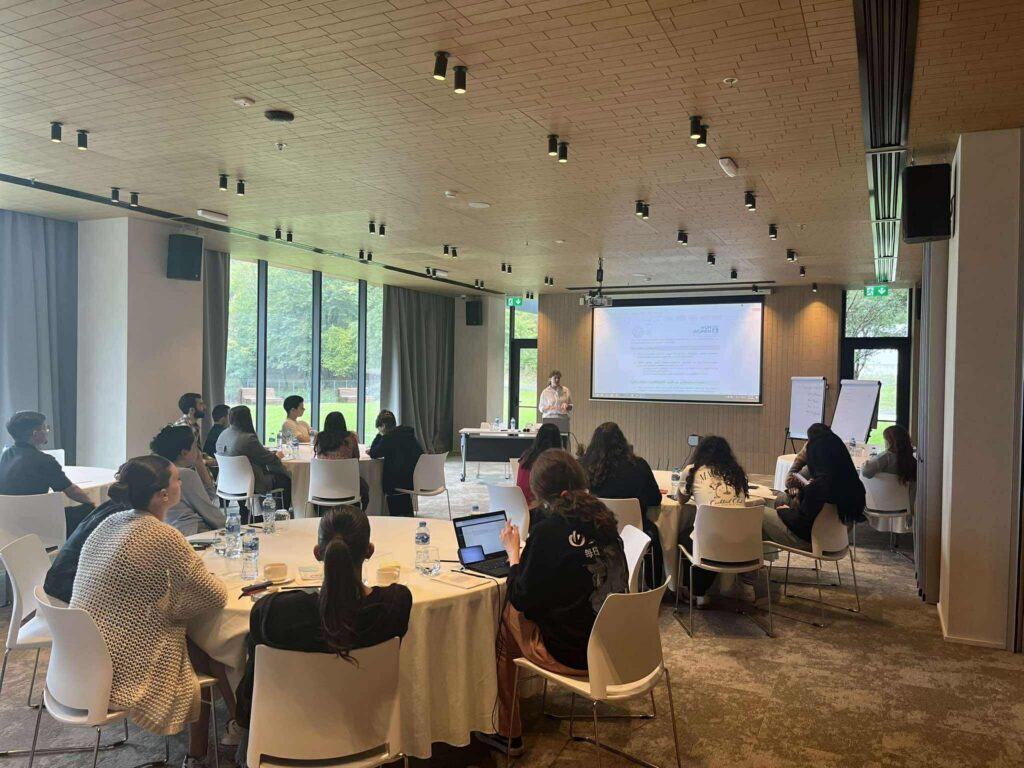Within the auspices of the Safer Transit Options for Passenger’s project, CRRC-Georgia carried out a randomized control trial, attempting to test whether a small policy change could make a large difference to minibus driving safety in Georgia. What was that small change, and how did we measure whether it might matter? This blog post provides an overview of both the policy to be tested and how we measured whether it could work.
The policy
A potentially simple way of decreasing distracted and other dangerous driving practices among minibus drivers is to use anonymous monitoring combined with penalties for dangerous driving. Under such a policy, the government would hire a small number of monitors to ride on randomly selected minibuses throughout the country without informing the drivers. After the ride, the monitor would report on any serious road safety violation as well as the number of distracted driving activities and safety violations carried out. If the driver committed serious traffic violations fines could be given out.
This policy would encourage safe driving and discourage dangerous driving. Moreover, it would require a relatively limited amount of funds from the government. Assuming that only 10 monitors are engaged in the program and they work 200 days a year, they could easily make up to 4000 trips, covering the majority, if not every, minibus route in the country. By randomly assigning monitors to different routes, minibus drivers would not be able to predict whether they are or would be monitored on any given trip. Hence, with the credible risk of being fined, drivers would likely drive safer.
Testing the theory
While the above policy, in theory, is quite sound, practice and theory often diverge. Hence, in order to test whether the policy would in fact be effective, CRRC-Georgia carried out a randomized control trial, which tested whether the knowledge that drivers might be monitored for safe driving and drivers could receive an award might improve their driving in late 2016.
Randomized control trials are a research design that comes from medical research. When doctors are attempting to understand whether a new medicine is effective, they randomly assign whether a patient gets the new drug or a placebo. Randomization is used to try to eliminate whether confounding factors that may make the medicine (in)effective for different individuals are distributed equally between the groups that receive the medicine and the placebo. Following this logic, for the STOP experiment, we randomly assigned minibus drivers to either a treatment or control group.
While in medicine, a treatment is, well a medical treatment, in our case information and action functioned as treatments. Minibus drivers that were assigned to the treatment group were told that they were being observed on a number of driving safety measures, and that the safest drivers would be awarded a gas voucher. Importantly, as an NGO, we could not make a credible claim about the issuance of fines. Hence, we were unable to fully test the effectiveness of the proposed policy above. Notably, we would expect the issuance of fines for unsafe driving to be a stronger incentive for individuals to drive safer, because people are usually more averse to losses than prone to seeking gains, a phenomenon psychologists refer to as loss aversion.
Between September 20th and October 20th, CRRC-Georgia interviewers observed 360 minibus trips in three waves of observation. In the first wave of observation, minibus routes which had been randomly selected were observed without telling the driver that they were being monitored. This group forms the study’s control group. In the second wave of observation, routes assigned to the treatment group were observed. In the third wave of observation, observers returned to both the control and treatment minibuses for anonymous observation.
Minibus drivers in the treatment group who drive along similar routes were informed that:
- Their trip would be monitored for safety along a number of dimensions;
- A monitor would return in the coming weeks and monitor their driving as well as other drivers again without telling them;
- If they were found to be among the safest drivers, they would be rewarded with a petrol voucher.
Over the course of the trip, monitors in all three waves recorded how many times drivers:
- Smoked;
- Text messaged;
- Had telephone conversations;
- Did not wear a seat belt;
- Passed in areas it was not legal to do so;
- Made other aggressive driving maneuvers;
- Behaved aggressively towards passengers;
- Behaved aggressively towards non-passengers.
Monitors also recorded stop and travel time, whether additional seats were added to the bus, whether passengers stood during the ride as well as a number of characteristics about the state of the minibus. Following the trip, the average speed of travel was calculated.
The above research design allows for a number of comparisons. First, by comparing the first wave control group to the second wave treatment group, we can test how the direct knowledge that one is being observed for safe driving effects driver safety. Second, by comparing the second wave treatment group to the third wave treatment group, we are able to tell whether the knowledge that one might be monitored again in the near future would have some lasting effect. Third, by comparing drivers in the first wave control group to drivers in the third wave control group, we can tell whether there was a contagion effect from the experiment i.e., whether the treated drivers talked to the non-treated drivers about the monitoring and they in turn also became safer drivers.
To test for the above types of effects, we used multivariate matching with genetic weights and calculations of average treatment on the treated (ATT). For readers interested in these methods, please see here. Using these methods, we calculate both the size of an effect and the probability that it emerged by chance alone.
In the next post in this series, which will appear tomorrow, we report the results of the experiment.







